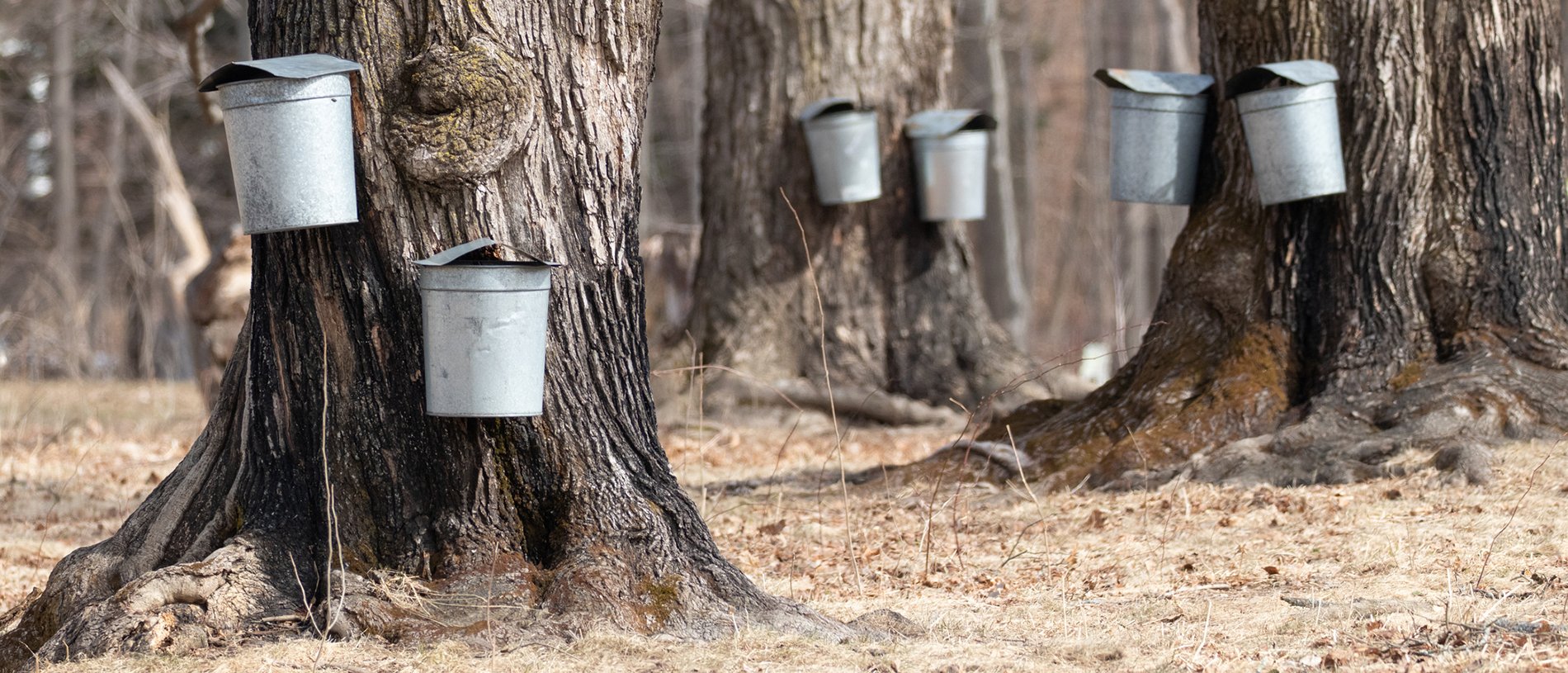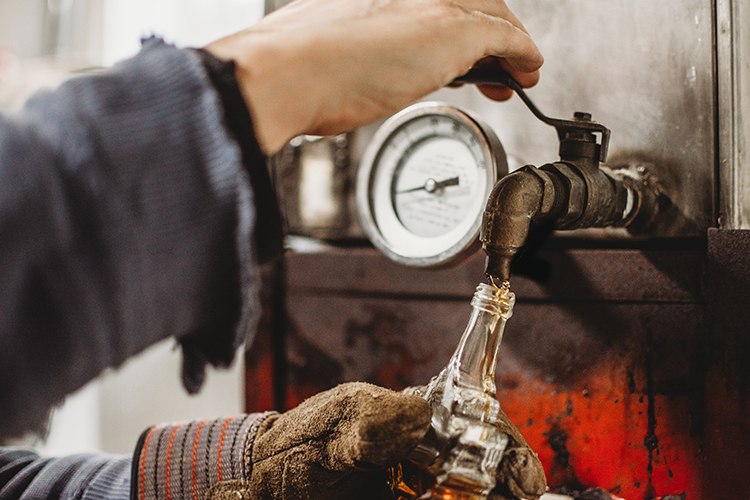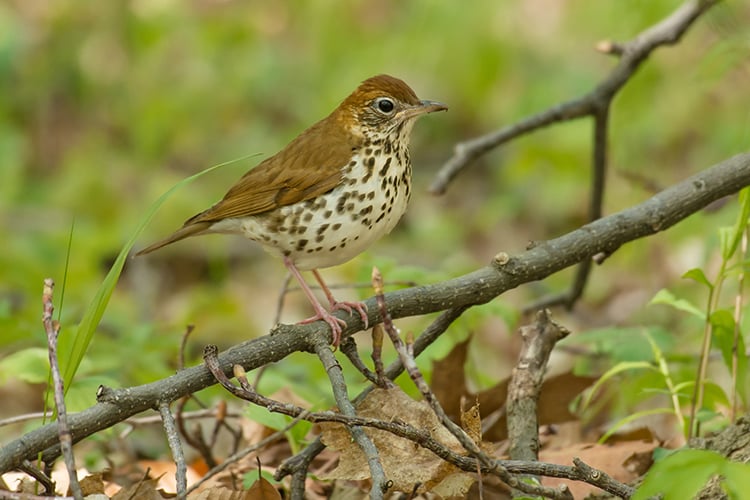Whether pooled into the pockets of a waffle, drizzled on fluffy pancakes, or poured over warm oatmeal, maple syrup completes any proper breakfast table spread.
First produced by the Indigenous peoples of North America, maple syrup is made by boiling and reducing the sap of maple trees. While all maples (deciduous trees of the Acer genus) have sweet sap, sugar maples (Acer saccharum) produce the best sap for sugaring. The sap of the sugar maple has a higher concentration of sugar than other maple species, typically around 2%, but this can vary from tree to tree and according to season.
Maple Sugaring Is for the Birds
As if you needed another reason to love maple syrup, you can now enjoy it while protecting birds. Mass Audubon has partnered with the Massachusetts Department of Conservation and Recreation, Massachusetts Maple Producers Association, Massachusetts Woodlands Institute, and Audubon Vermont to launch a Bird-Friendly Maple Project in Massachusetts, modeled after the original project piloted by Audubon Vermont.
Many sugarbushes (i.e., stands of maple trees used for sap collection) are managed to consist only of maple trees. A monoculture like this provides some habitat for birds, but managing the forest with biodiversity in mind can make it even better. By allowing other tree and shrub species to grow alongside the sugar maples, incorporating habitat features such as cavity trees and fallen logs on the ground, and creating more complex layers of vegetation, a maple producer can provide more high-quality nesting and foraging opportunities for forest birds.
This kind of "structural complexity" creates specialized niche environments that allow a variety of forest birds to coexist in close proximity. For example, Black-throated Blue Warblers form nests in the shrubs and saplings of the understory, Wood Thrushes sing their haunting flute-like songs from the midstory, Scarlet Tanagers flash brightly through the highest canopies, Great-crested Flycatchers nest in tree cavities, and Pileated Woodpeckers whack away at dead tree snags looking for carpenter ants. Done right, bird-friendly management practices can maintain sap production and improve the long-term health of the sugarbush at the same time.
A Win-Win for Birds & People
Sap runs normally occur in Massachusetts from mid-February to mid-March when night temperatures fall below 25 degrees Fahrenheit and days warm to at least 40 degrees Fahrenheit. Unfortunately, the sugar content of maple sap is declining over time as a result of climate change, and milder winters and earlier, more unpredictable spring thaws are resulting in lower yields and more frequent poor sugaring seasons.
As it happens, the same practices that promote biodiversity in a sugarbush also help a forest mitigate and adapt to climate change, by sequestering more carbon and increasing overall forest resilience. Building on our Foresters for the Birds guidelines, landowners that meet the standards required by the Bird-Friendly Maple Project can now have their maple syrup recognized as bird-friendly.
By looking for the bird-friendly maple logo, consumers can support the efforts of these syrup producers and help turn a sticky situation into a sweet reward.
Species Spotlight: Wood Thrush (Hylocichla mustelina)The irresistibly beautiful song ringing through woodlands, the glimpse of the cinnamon back and shockingly polka-dotted breast, and the message Wood Thrush carries as it returns from its winter grounds in Central America all speak to this bird’s iconic place in the forests of the Northeast, including sugarbushes. But Wood Thrushes are declining in Massachusetts. Forest fragmentation—in both the U.S. and on their wintering grounds—degrades their habitat, and, while the relationship between fragmentation and productivity is complex, in general, large forest patches with mature trees and lush ground cover provide some of the best nesting habitat. Over the next few years, Mass Audubon will be leading a deep dive on a diverse set of species such as the Wood Thrush that are representative of the critical actions we are taking to meet the goals of our Action Agenda. These "flagship species" are at risk from habitat loss and climate change, are characteristic of the ecosystems we are committed to conserving, and will help us measure the impact of our efforts. Most importantly, they all await your discovery as we increase access to nature across Massachusetts. |
Upcoming Programs on Maple Sugaring
See MoreA Nature Year at Habitat
-
Habitat Education Center and Wildlife Sanctuary, Belmont
-
12 classes starting
Wednesday, September 3
10:00am-12:00pm
Adults
A Nature Year at Drumlin Farm and Broadmoor
-
Broadmoor Wildlife Sanctuary, Natick
-
12 classes starting
Friday, September 19
10:00am-12:00pm
Adults
A Nature Year at Drumlin Farm and Broadmoor
-
Drumlin Farm Wildlife Sanctuary, Lincoln
-
12 classes starting
Friday, September 19
10:00am-12:00pm
Adults
Stay Connected
Don't miss a beat on all the ways you can get outdoors, celebrate nature, and get involved.





